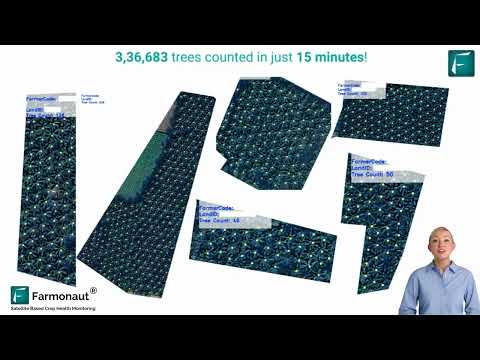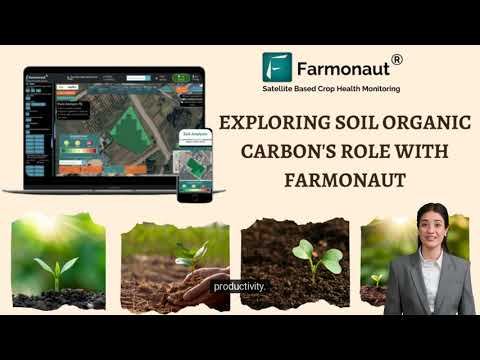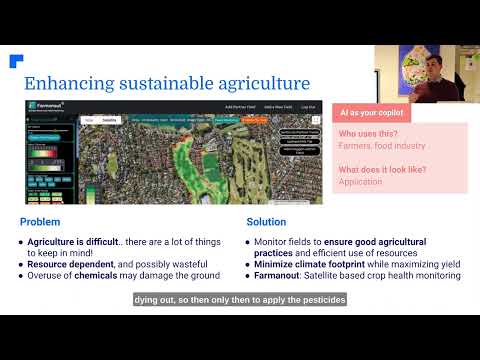Revolutionizing New England Forests: Sustainable Practices for Climate Resilience and Biodiversity
In the heart of New England, a groundbreaking initiative is taking root, promising to transform the way we approach forest management and conservation. We’re excited to share with you the details of this innovative program that’s set to revolutionize our approach to sustainable forestry practices and climate change adaptation in forests. Join us as we explore how this flagship site in Connecticut is paving the way for a more resilient and biodiverse future for our beloved woodlands.
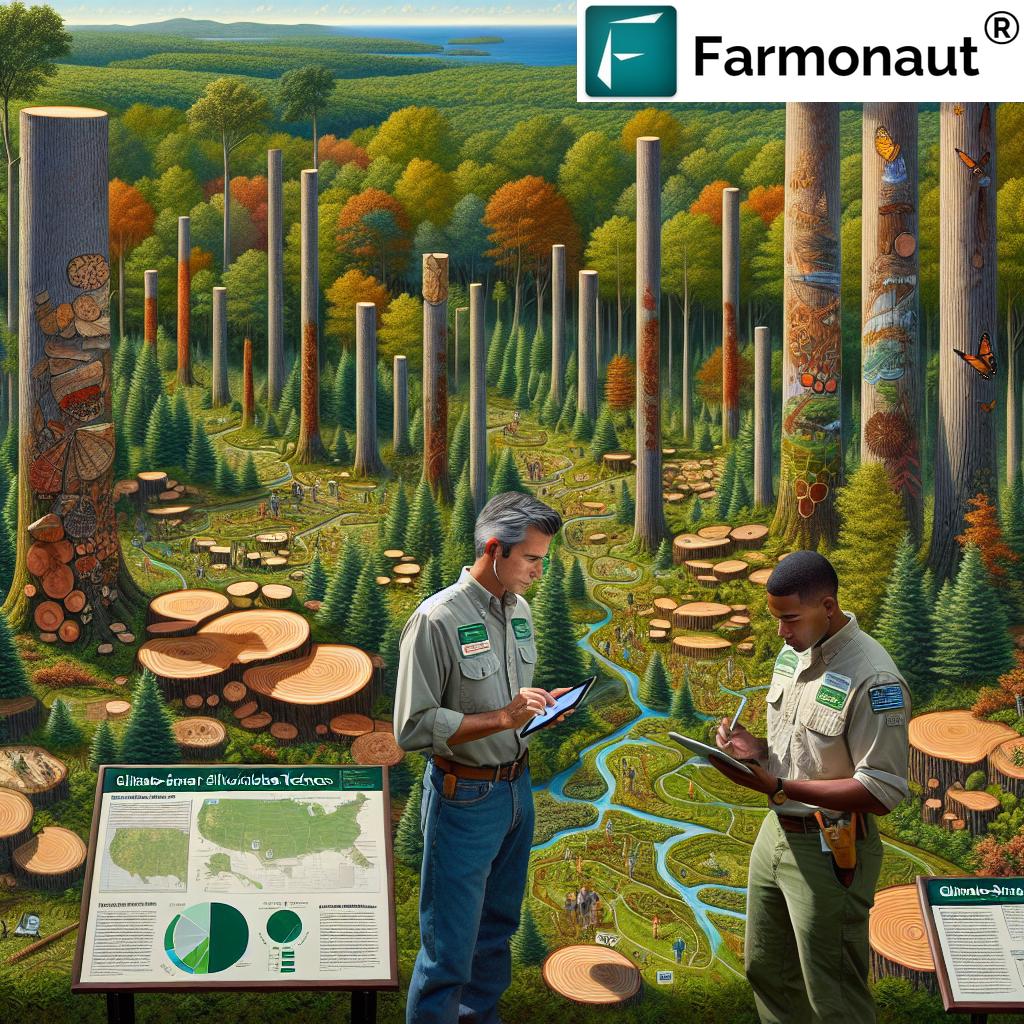
“Connecticut’s flagship site aims to grow resilient oak hickory forests, potentially increasing carbon storage by up to 30%.”
The Birth of a Forest Revolution
At the forefront of this transformative journey is the Great Mountain Forest (GMF) in Norfolk, Connecticut. This venerable forest has been chosen as the flagship site for the New England Forestry Foundation’s (NEFF) Grow Resilient Oak Hickory Forests (GROH) program. But what makes this initiative so special? Let’s delve into the heart of this forest revolution.
The GROH program is not just another conservation effort; it’s a comprehensive approach to forest resilience strategies that addresses the pressing challenges posed by climate change. By focusing on growing resilient oak hickory forests, the program aims to create a model for sustainable forest management that can be replicated across New England and beyond.
- Climate-smart silviculture techniques
- Enhanced biodiversity conservation
- Sustainable forest management practices
- Carbon storage optimization
These key elements form the backbone of the GROH program, setting it apart as a pioneering effort in the field of forestry. But the impact of this initiative extends far beyond the trees themselves.
A Collaborative Effort for a Greener Future
The success of the GROH program hinges on the power of collaboration. By bringing together diverse stakeholders, including landowners, foresters, conservationists, and environmental professionals, we’re creating a robust network of knowledge and expertise. This collaborative approach ensures that the best practices in forest management are shared and implemented across the region.
One of the most exciting aspects of this initiative is its focus on education and training. Through a series of comprehensive workshops and field training sessions, participants will gain hands-on experience in implementing climate-smart silviculture techniques. These educational programs are designed to equip forest stewards with the tools they need to maintain healthy woodlands in the face of climate change.
As we work towards a more sustainable future, it’s crucial to leverage cutting-edge technology to support our efforts. That’s where platforms like Farmonaut come into play. While primarily focused on agricultural applications, the principles of satellite-based monitoring and AI-driven insights can be invaluable in forest management as well.
The Science Behind Resilient Forests
At the core of the GROH program is a deep understanding of forest ecology and the specific challenges posed by climate change. Oak hickory forests are known for their resilience and adaptability, making them an ideal focus for this initiative. But what exactly makes these forests so special?
- Drought tolerance: Oak and hickory trees have deep root systems that allow them to access water even during dry periods.
- Fire resistance: The thick bark of these trees provides protection against low-intensity fires, which are becoming more common due to climate change.
- Carbon sequestration: Mature oak hickory forests are excellent at storing carbon, helping to mitigate the effects of greenhouse gas emissions.
- Biodiversity support: These forests provide habitat for a wide range of wildlife, from insects to mammals.
By focusing on these resilient species, we’re not just preparing for the future; we’re actively shaping it. The climate-smart silviculture techniques employed in the GROH program are designed to enhance these natural strengths while addressing potential vulnerabilities.
Adapting to a Changing Climate
Climate change poses numerous challenges to our forests, from increased risk of drought and wildfires to the spread of pests and diseases. The GROH program takes a proactive approach to these challenges, implementing strategies that not only help forests survive but thrive in changing conditions.
“New England’s sustainable forestry initiative targets training 1000+ landowners and foresters in climate-smart silviculture techniques by 2025.”
Some of the key adaptation strategies include:
- Selective thinning to reduce competition for water and nutrients
- Planting climate-adapted tree species to increase forest resilience
- Creating forest openings to promote regeneration and species diversity
- Implementing advanced pest and disease monitoring systems
These strategies are not just theoretical; they’re being put into practice at the GMF site, providing real-world data on their effectiveness. This hands-on approach allows us to refine our techniques and share best practices with forest managers across the region.
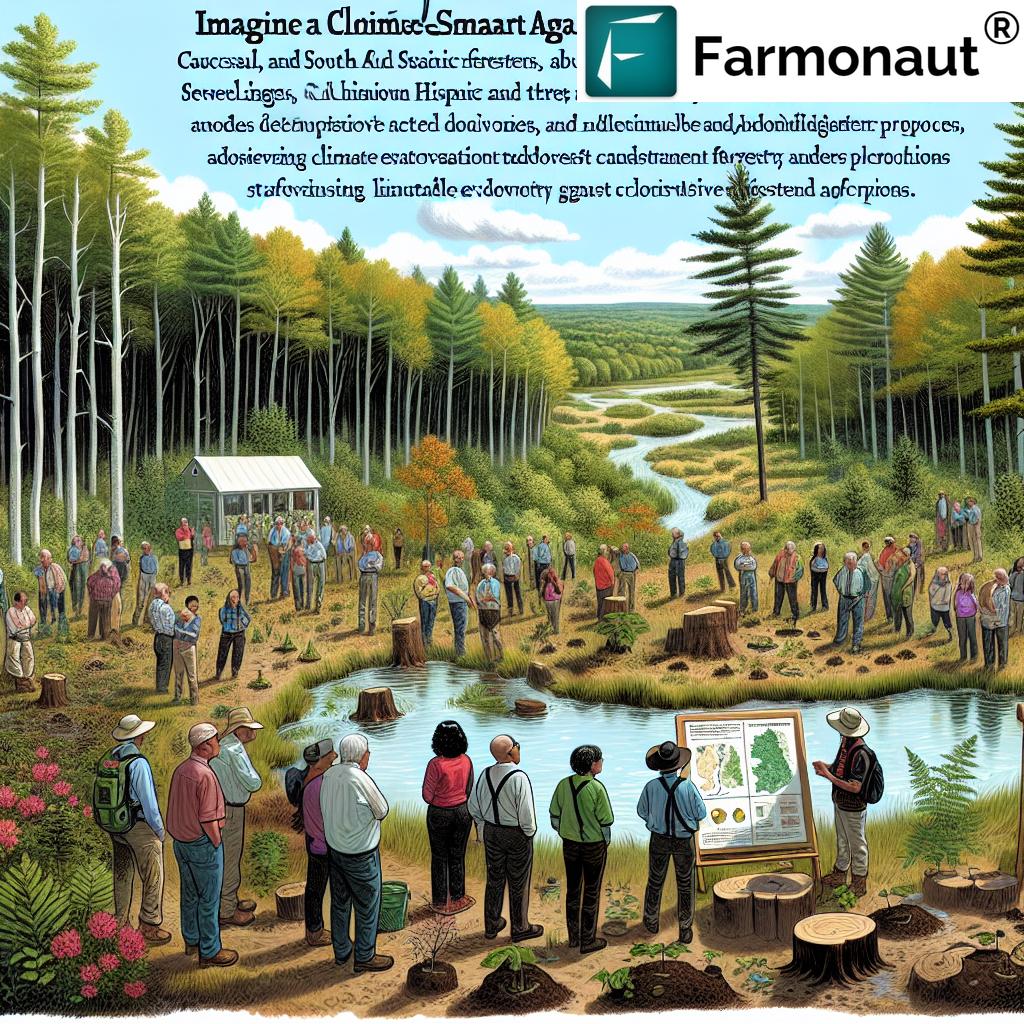
The Economic Impact of Sustainable Forestry
While the environmental benefits of the GROH program are clear, it’s important to recognize its potential economic impact as well. Sustainable forestry practices don’t just benefit the environment; they can also create jobs and support local economies.
By promoting ethical timber production, the program opens up new opportunities for responsible harvesting and wood product manufacturing. This approach ensures that our forests continue to provide valuable resources while maintaining their ecological integrity.
Furthermore, the focus on education and training creates a skilled workforce capable of implementing advanced forest management techniques. This not only supports current job markets but also paves the way for new career opportunities in the green economy.
As we consider the economic aspects of sustainable forestry, it’s worth noting the role that technology can play in optimizing these practices. Tools like those offered by Farmonaut’s API can provide valuable insights into land management and resource allocation, potentially enhancing the efficiency and sustainability of forestry operations.
Biodiversity: The Key to Resilient Ecosystems
One of the most critical aspects of the GROH program is its emphasis on biodiversity conservation. A diverse forest ecosystem is inherently more resilient, capable of withstanding a wider range of environmental stresses. But how exactly does the program promote biodiversity?
- Encouraging a mix of tree species and age classes
- Preserving and creating habitat for wildlife
- Protecting understory vegetation
- Managing invasive species to protect native flora and fauna
By focusing on these aspects, we’re not just creating forests that can withstand climate change; we’re fostering thriving ecosystems that support a wide range of life. This holistic approach to forest management ensures that our woodlands remain vibrant and healthy for generations to come.
The Role of Technology in Modern Forestry
As we push the boundaries of sustainable forest management, technology plays an increasingly important role. From satellite imagery to AI-driven analysis, modern tools are revolutionizing the way we monitor and manage our forests.
While not specifically designed for forestry, platforms like Farmonaut’s mobile app demonstrate the potential of technology in land management. By adapting similar principles, forest managers can gain real-time insights into forest health, track changes over time, and make data-driven decisions.
Some of the technological advancements being explored in forestry include:
- LiDAR mapping for detailed forest structure analysis
- Drone-based monitoring for early detection of pests and diseases
- Machine learning algorithms for predicting forest growth and carbon sequestration
- IoT sensors for real-time monitoring of forest conditions
These technologies not only enhance our ability to manage forests sustainably but also provide valuable data for research and policy-making.
Comparative Analysis: Traditional vs. Climate-Smart Forest Management
To better understand the impact of the GROH program, let’s take a look at how climate-smart silviculture techniques compare to traditional forest management practices:
| Management Aspect | Traditional Approach | Climate-Smart Approach | Estimated Climate Resilience Impact | Estimated Biodiversity Benefit |
|---|---|---|---|---|
| Tree Species Selection | Focus on commercially valuable species | Diverse mix of climate-adapted species | High | High |
| Soil Conservation | Basic erosion control measures | Advanced soil health management and carbon sequestration techniques | Medium | Medium |
| Water Management | Passive approach relying on natural precipitation | Active water conservation and drought-resistant planting strategies | High | Medium |
| Carbon Storage | Incidental carbon storage through growth | Targeted carbon sequestration through species selection and management practices | High | Low |
| Pest and Disease Control | Reactive treatment of outbreaks | Proactive monitoring and integrated pest management | Medium | High |
This comparison clearly illustrates the advantages of the climate-smart approach in terms of both climate resilience and biodiversity benefits. By adopting these practices, we’re not just preparing our forests for the future; we’re actively enhancing their ability to thrive in changing conditions.
The Future of Forestry: Scaling Up Success
As the GROH program at Great Mountain Forest demonstrates its effectiveness, the next challenge is to scale up these practices across New England and beyond. This expansion will require continued collaboration, education, and investment in sustainable forestry practices.
Some key steps in scaling up the program include:
- Developing regional networks of demonstration sites
- Creating online resources and training programs for remote learning
- Engaging with policymakers to support sustainable forestry initiatives
- Fostering partnerships with academic institutions for ongoing research
By taking these steps, we can ensure that the lessons learned from the GROH program have a lasting impact on forest management practices across the region.
Empowering Forest Stewards
At the heart of the GROH program is a commitment to empowering forest stewards with the knowledge and tools they need to manage their woodlands sustainably. This empowerment extends beyond traditional forestry professionals to include landowners, conservationists, and community members.
Through comprehensive educational programs and field training workshops, participants gain hands-on experience in:
- Assessing forest health and resilience
- Implementing climate-smart silviculture techniques
- Monitoring and adapting to changing environmental conditions
- Balancing timber production with ecosystem services
By building this broad base of knowledge and skills, we’re creating a community of informed and engaged forest stewards who can drive sustainable practices forward.
The Global Context: Forests as Climate Solutions
While the GROH program focuses on New England’s forests, it’s important to recognize the global significance of sustainable forestry practices. Forests play a crucial role in mitigating climate change, acting as carbon sinks and regulating local and regional climates.
The lessons learned from this initiative have the potential to inform forest management practices around the world, contributing to global efforts to combat climate change and preserve biodiversity. By sharing our experiences and best practices, we can help create a more resilient and sustainable future for forests everywhere.
Conclusion: A Forest for the Future
As we conclude our exploration of the GROH program and its impact on New England’s forests, it’s clear that we’re witnessing the birth of a new era in forest management. By embracing climate-smart silviculture techniques, promoting biodiversity, and fostering collaboration, we’re not just preparing our forests for the challenges of climate change; we’re actively shaping a more resilient and vibrant future for our woodlands.
The journey towards sustainable forestry is ongoing, and there’s still much work to be done. But with initiatives like the GROH program leading the way, we have reason to be optimistic about the future of our forests. As we continue to learn, adapt, and innovate, we’re creating a legacy of healthy, resilient forests that will benefit generations to come.
Let’s embrace this forest revolution and work together to ensure that our woodlands remain vibrant, diverse, and resilient in the face of a changing climate. The future of our forests depends on the actions we take today, and programs like GROH are showing us the way forward.
FAQs
- What is the GROH program?
The Grow Resilient Oak Hickory Forests (GROH) program is an initiative by the New England Forestry Foundation aimed at implementing climate-smart silviculture techniques to enhance forest resilience and biodiversity. - Why focus on oak hickory forests?
Oak hickory forests are known for their resilience to climate stressors like drought and fire, making them ideal candidates for climate adaptation strategies. - How does the program address climate change?
The program implements strategies such as selective thinning, planting climate-adapted species, and advanced monitoring to help forests withstand climate-related challenges. - What role does education play in the GROH program?
Education is crucial, with the program offering workshops and field training to equip landowners, foresters, and conservationists with skills in climate-smart forest management. - How does sustainable forestry benefit the local economy?
Sustainable forestry creates jobs in forest management and ethical timber production while supporting long-term resource availability.
Earn With Farmonaut: Affiliate Program
Earn 20% recurring commission with Farmonaut’s affiliate program by sharing your promo code and helping farmers save 10%. Onboard 10 Elite farmers monthly to earn a minimum of $148,000 annually—start now and grow your income!
